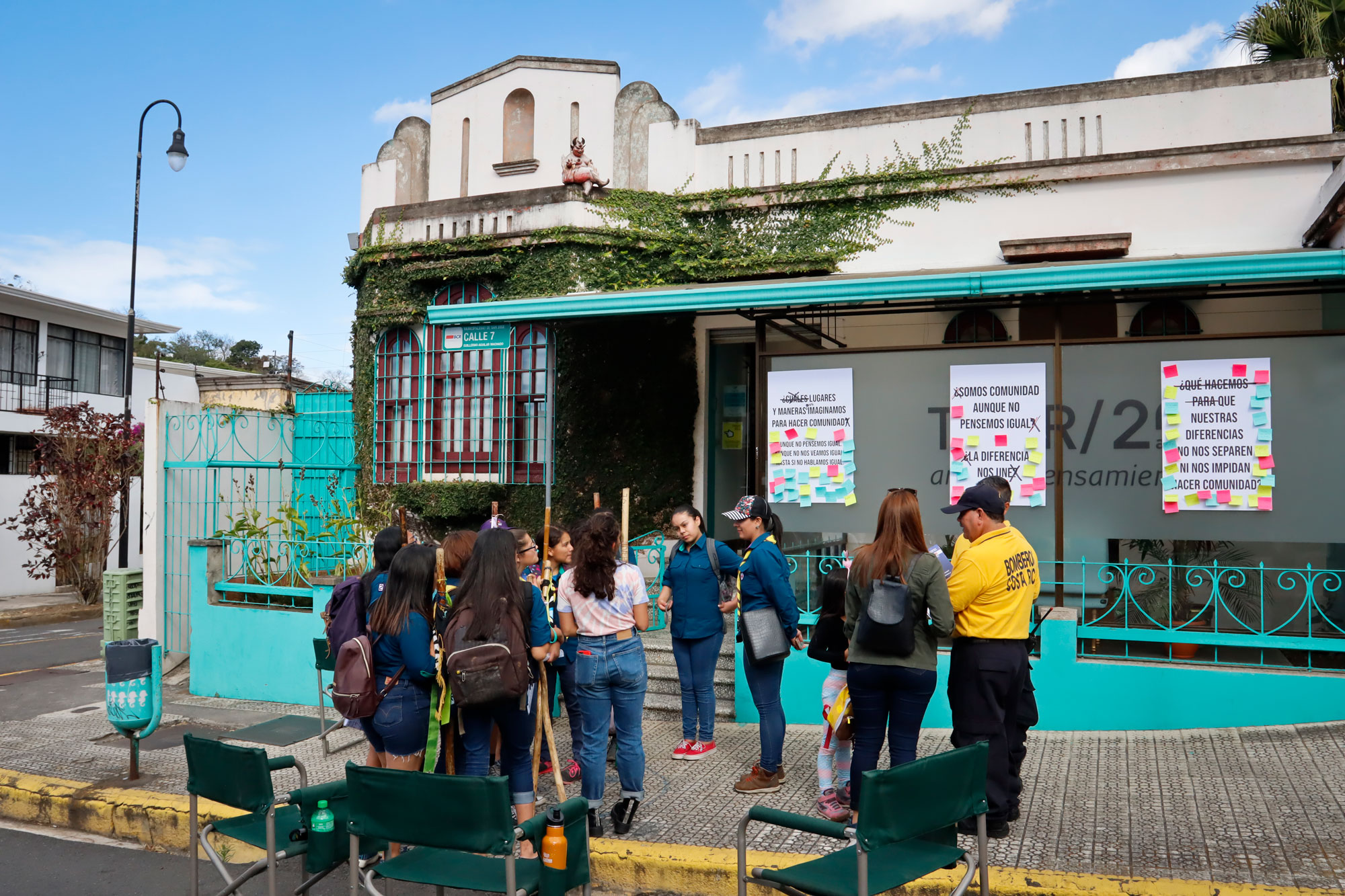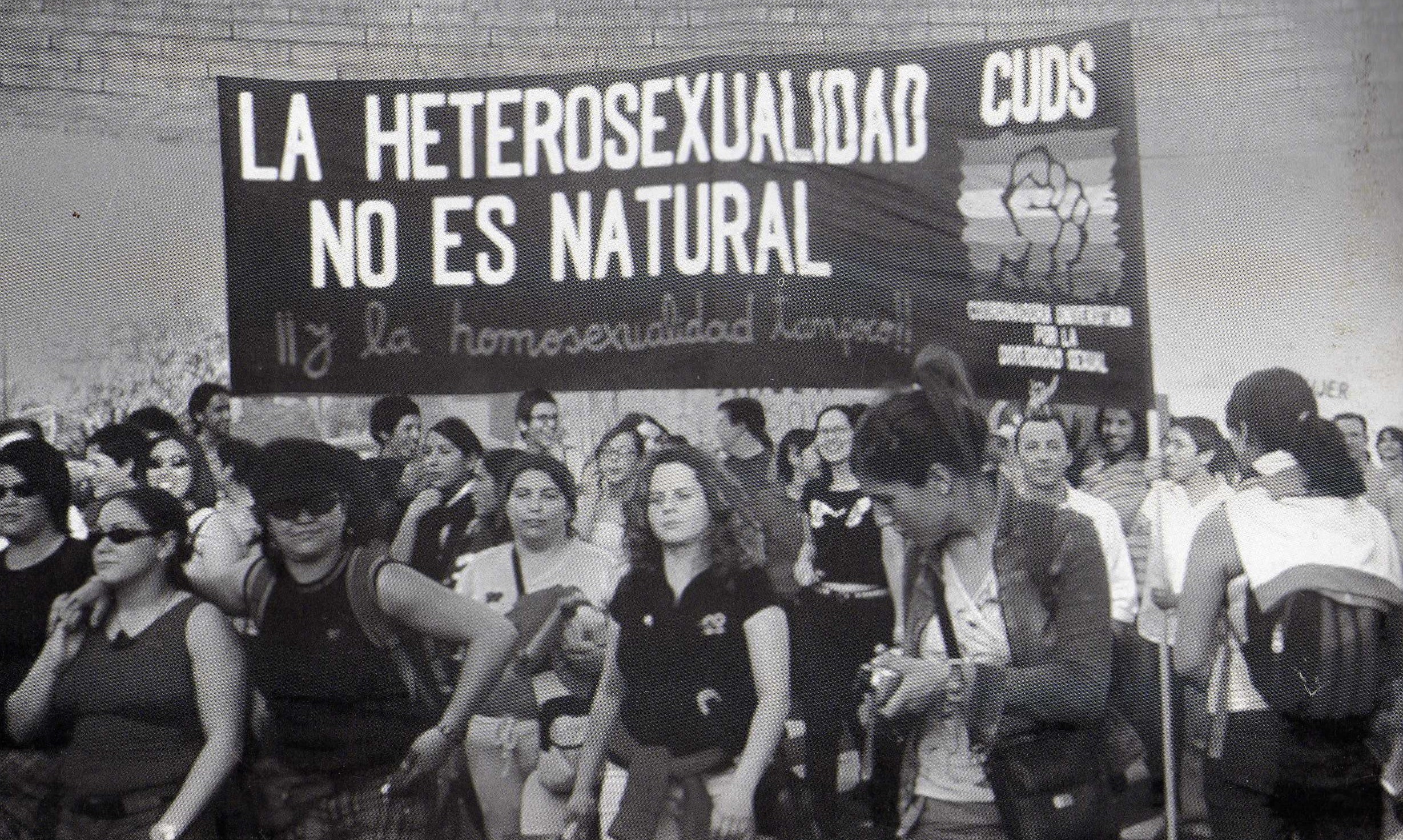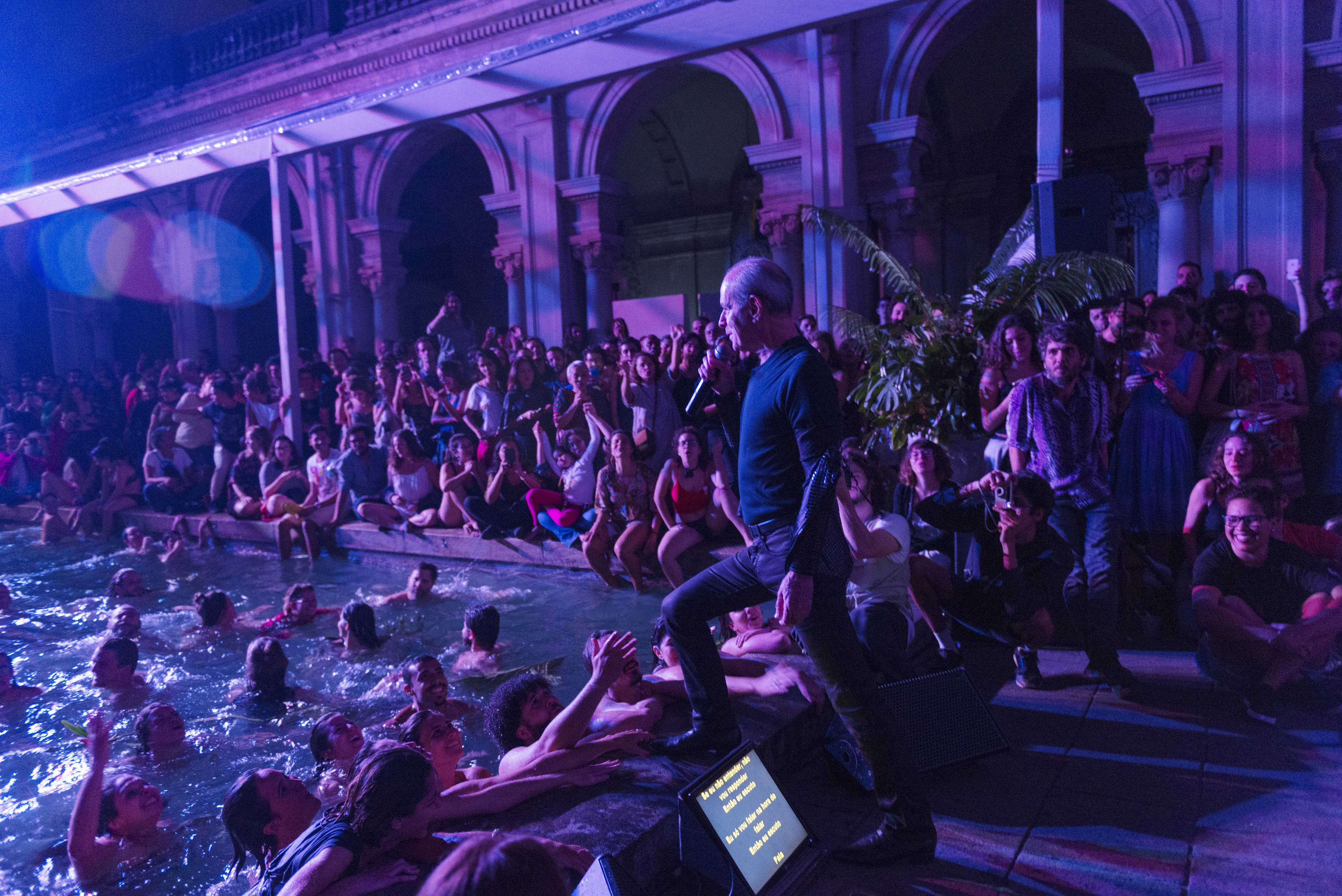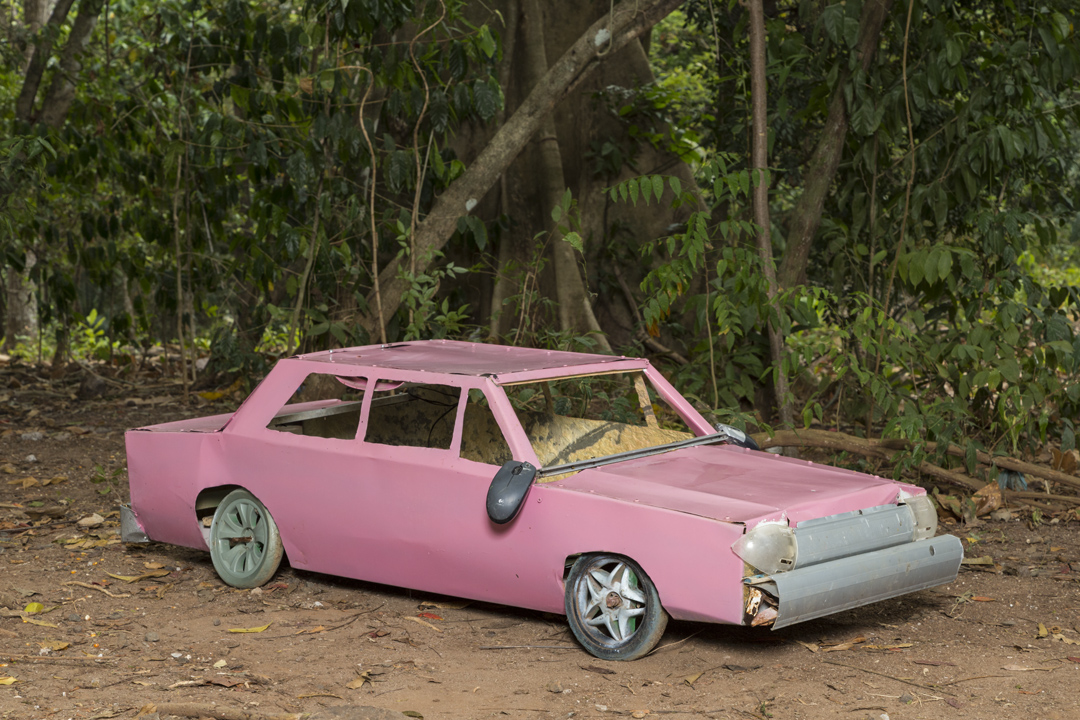Against a 'Straight' Model of Arts Education
06/16/2022
What methodologies and structures for teaching and learning about art are maintained today in academic circles? In this world, what is the relationship between knowledge and practices? What interactions do the worlds of the university and academia establish with the social, political and cultural context?
The aim of this article is to share some of the experiences encountered in the course of an investigation that seeks to identify in Latin America the affirmation of an idea of critical institutionalism in the cultural sphere, which has inspired —among other things— intersections and hybridizations between academic and extra-academic formats and the creation of programs and/or spaces for training and critical discussion, as alternatives to those of formal higher education in the arts. This proposal for a new way of understanding the teaching and learning experience in the arts has been steadily gaining traction within cultural institutions and settings, and its impact on the training of artists and cultural professionals is, therefore, an important topic for analysis.
At the outset, it might be interesting to ask ourselves certain questions: What kind of knowledge do universities promote and what, in contrast, do they discourage? What methodologies and structures of teaching and learning in the arts are perpetuated to this day in academia? What is the relationship between knowledge and practices within this world? What interactions do universities and the academic world establish with the social, political and cultural context? How does the university system impact ways of regulating identity, the body and desire? And finally, what kinds of research topics are validated or promoted by research spaces, councils and academies? Which are neglected?
We will take as our starting point these questions about the relationship between universities and other areas of knowledge in matters of art and culture, in order to present —guided by certain critical ideas— a brief overview of a group of Latin American experiences that question in various ways the formal arts education system.

Towards a Critical Review of the University System
It is possible to structure a questioning of the educational system in the arts as a dialogue with the critical review of the university system that has taken place relatively recently and internationally.1 Indeed, in recent years, with a greater or lesser degree of radicalism, different actors in the cultural field —groups, organizations, movements and institutions (university, non-university and even anti-university)— have begun to question and rethink the academic world and universities, within a contemporary panorama which, in each case, presents different problems.
In this context, it is interesting to analyze the configuration of the map of those mobilizations in Latin America which, since 2011, have sought to articulate a response in favor of public, universal and free education as a fundamental right of the individual, in accordance with Article 26 of the Universal Declaration of Human Rights. This demand has been made across highly diverse contexts and has also brought to the fore discussion about the role of education in social transformation. The Chilean and Argentinean cases are perhaps the most important to highlight.
In Argentina, policies advocating cuts to the scientific and university sector at the national level —particularly since 2017— were met with numerous strikes and mobilizations that sought to draw attention to measures that affect workers and students of national universities and academic researchers throughout the country.2 In Chile, the wave of protests led by high school and university students which began in 2011 has called expressly for public education and increased intervention by the state, while opposing the privatization policies that have characterized the educational system in Chile to date.
The Chilean case constitutes the most important student movement of recent times in South America, and —until the emergence of the mass movement of October-November 2019, which challenged the entire socioeconomic contract— the most significant mass event in Chile since the return to democracy in 1990.3 Groups such as Cuadernos de Movilización or Colectivo Universitario de Disidencia Sexual (CUDS), have gained particular momentum from these events.
Cuadernos de Movilización functioned as an editorial device, calling for this “crisis of the ordinary” to be viewed from the perspective of a flow of marches and urban nodes that articulate the circulatory logic of the city, as an object of study and as a territory for such actions.5 For its part, Colectivo Universitario de Disidencia Sexual (CUDS), which since the early years of this century had already been engaged in critical reflection concerning the university system and its impact on the ways of organizing knowledge and regulating the body and desire, gained particular momentum and visibility within the framework of the demands for non-sexist education that permeated the 2011 protests.

Felipe Rivas San Martín, a founding member of the collective, explains the framework through which their dissident practice is ranged against the academic system, and hints at an affirmative position on gender and sexuality as the territory of a political stance:
«The problem stems from the notion of ‘academia’ and its contemporary configuration as a supervisory, regulatory and disciplinary entity controlling a unique and legitimate production model. This mode of thought production is associated with a knowledge market that prioritizes capitalist profit and which has been structuring university production in accordance with rigid formats […]. There exists a straight model of academic production, masculine and heterosexual in its form, neoliberal in its outlook, that we are starting to openly resist through models of critical and dissident reflection».7
Hybridizations of Learning
As far as the specific field of arts education is concerned, we find a number of cases which, in different ways, invite us to rethink the university teaching and learning experience. We propose that these initiatives be grouped in the following way: those which, within the university or in collaboration with it (in this case, from cultural institutions), generate methodological intersections or ruptures that involve, among other things, the agency of the students with regard to the learning process itself; and those which, beyond the university, make a stand in a more disruptive or rebellious way against the academic system in the arts, while proposing alternative formats.
Both cases lead one to the notion that the future of artistic education has a lot to do with the hybridization of institutions and, consequently, of methodologies, or with the idea of freeing oneself from the "academic corset" in order to embrace new forms of connection8 with that which lies beyond the university; in other words, recognizing the new needs of the student body based on a context that calls for new types of insertion for the artists or cultural workers of the future. As the Argentine artist and university professor Eduardo Molinari has said:
«[...] the contemporary context of the production, circulation and reception of artistic practices has expanded [...] there exist countless initiatives led by groups that unite artists with people from other fields and which also function as “employment opportunities”: publishing houses, community radio stations, exhibition and training spaces, online design platforms, work with social and environmental movements, etc. [...] it is essential that public universities begin to think about incorporating into their educational programs the dimension of "art in context" or "public artistic practices", which would enable the linking up of students and graduates with the community or the business world, depending on the inclinations of each individual».9
His criticism is focused, above all, on the endogamic nature of training and research in the arts. This point of view is very much in line with the reflections that gave rise to the 'Proa Universidades' program in 2014, at Fundación Proa (Buenos Aires, Argentina). This is just one of the cases in which alternative experiences in arts education are proposed within universities, or in connection with them.
‘Proa Universidades’ is a program that aims to generate an integration between areas of academic study of art in national universities and a map of artistic spaces in the southern part of the city of Buenos Aires, within which Fundación Proa operates as the main focal point of interaction. In contrast to the endogamy that largely characterizes the university environment in Argentina, the program favors a process of opening up the academic experience beyond the classroom, and interaction that incorporates creative and collaborative work between students and professionals from museums and participating cultural spaces. Within this framework, the aim is to provide a context for the testing and practical implementation of academic content.
This intersection constitutes a challenge to the predetermined application of the knowledge produced by universities, and an opening up to the historical dimension of the present. What is being done in those galleries, museums and cultural spaces? Is the theoretical repertoire of the university adequate or useful? Do these institutions also produce knowledge about their practices and materials? Where is this knowledge directed? One of the goals of this integrated approach is for participating cultural spaces to recognize the student body as an important public and, at the same time, for this public to be repositioned as an active player, a producer of content and critical debate, within the artistic institution. In this way, the program aims to transform the traditional educational process, positioning art institutions and spaces as territories for learning, training and research, and as places with the potential to be appropriated and "activated" by students, in a professional capacity.10
In line with this idea of appropriation and active participation by students as designers of their academic and learning experience, it is important to mention the work of Max Hernández Calvo, curator, researcher, critic and teacher at the Faculty of Art and Design of the Pontifical Catholic University of Peru (PUCP). He reflects on the possibility of “taking over the university” based on the ability that students have to influence the educational system by taking control, albeit partially.11 The idea is to challenge the strictly regulated framework of the university system, and to propose a new experience, more committed to the specific needs of the student body and inserted within a given social fabric.
This alteration to the system, which stems from three specific experiences engaged in by students of the university, against, with or in parallel with the artistic education system, introduces the components of the "unknown" and the "uncertain" as pedagogical values.
«Orienting education towards the unknown calls for subjecting its processes to interrogation [...], placing them in tension with the protocols that, for others, define their content, their methods and their objectives. In other words, it calls for opening up the educational process to the intervention of its subjects: the students [...]. This is where the limits of these seizures of power become apparent».
Returning to the idea of intersection between universities and arts centers, once again in the city of Buenos Aires, the case of the Center for Artistic Research (CIA) is an example of a significant exponent of an experimental pedagogy. Created in 2008 and becoming the Antifascist Research Center (with the same acronym in Spanish) in 2019, the CIA —which has ceased to exist— was run by the artist and sociologist Roberto Jacoby, and it maintained a specific relationship with the master’s degree course in Contemporary Latin American Aesthetics of the National University of Avellaneda (UNDAV), through a dynamic in which artists and teachers from the respective staffs were combined and students permitted to attend and involve themselves in the artistic and teaching activities of both programs. In this case, the university broke down the rigid walls of academia in order to hybridize with the dynamics and artistic-pedagogical proposals of an experimental art center.
Another case is that of the University Museum of Contemporary Art (MUAC), a dependency of the National Autonomous University of Mexico (UNAM), which runs an academic program it calls ‘Campus Expandido’ [‘Expanded Campus’]. Created in 2009, this initiative has brought the MUAC together with the academic departments of UNAM's postgraduate courses and research centers, to form an interdisciplinary academic program for research, production, teaching and the dissemination of critical theory and contemporary art. Of course, in this case, cooperation and the setting up of an interstitial zone are facilitated by the fact that the museum is run under the auspices of the university, as occurs in many other cases of academic institutions that "contain" museums within their structure. Nevertheless, in this case it is important to point out the necessity of such a link.
With regard to the set of experiences which, beyond the university setting, are established in a more disruptive or anti-establishment manner, in opposition to the academic arts system, the Escola de Artes Visuais (EAV) de Parque Lage in Rio de Janeiro, founded by Rubens Gerchman in 1975 as an alternative to the Institute of Fine Arts, is probably one of the most outstanding examples and remains a benchmark to this day in terms of alternative artistic training. With its focus on theoretical-practical courses and the exercise of critical thinking, from its inception this school set out to challenge the prevailing model of easel painting and academic structures. The countercultural spirit and constant reinvention of the EAV’s approach —in pursuit of maintaining an ongoing dialogue with a social agenda— has been sustained over the years by a tireless awareness of the public responsibility of an art school. Here, the notion of alternative education functions within a cultural center, reinforcing the idea of hybrid formats that emerge where perspectives and institutional formats meet. The constant questioning of education in the arts leads inevitably to a questioning of academic structures, and also of the very institutionalization of a cultural center.



In a more recent initiative, from Nicaragua, the pedagogical approach of the Espacio para la Investigación y Reflexión Artística (EspIRA) is oriented towards the development of a creative process anchored in the artist's own experiences and outside the disciplinary artistic field, thereby promulgating the construction of new languages and freedom of forms. Founded by the artist and teacher Patricia Belli, EspIRA is a parallel teaching platform, standing in opposition to a training system that she saw as obsolete in her country, and it has enjoyed notable success in other Central American countries. This initiative offers alternatives to the training and learning experiences of traditional fine art schools, in response to developments in contemporary artistic practices ignored by the national academic and university system. It offers a setting for training and learning from the perspective of critical positions committed to the present, with parallel training outside the university environment and beyond the prevailing technical approach.12
Reflecting this same spirit, in Costa Rica the Teor/Ética program ‘Alter Academia’ has, since 2016, offered a series of artistic residencies that operate from the institution’s Lado V site. Through conversations, workshops and dialogue with different audiences, the program seeks to encourage alternative approaches to artistic processes and explore creative ways of producing and working, in order to arrive at new possibilities that go beyond traditional ways of constructing and socializing knowledge. The experience "uses art as an excuse to explore processes and understandings that transcend limits and ways of doing/generating traditional learning and knowledge systems”.13
The aforementioned proposals (among others that we cannot detail here), constitute a new way of understanding the processes of learning and production of knowledge in the contemporary world. They propose alternatives to, or provoke a crisis in, a certain notion of institutionalization, with their methodologies and ways of thinking about learning in the arts. They posit, more or less directly, a new concept of the artistic institution and university. This concept can, with variations from case to case, incorporate different practices and changes in direction, “change spaces”, whether that be the artistic space or academia, or to a greater or lesser extent preserve a specific language, but in all cases it is intrinsically associated with a demand for greater impact and the effective social insertion of art and the teaching of art.


